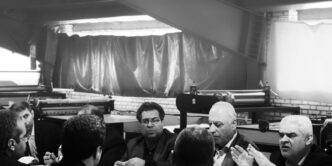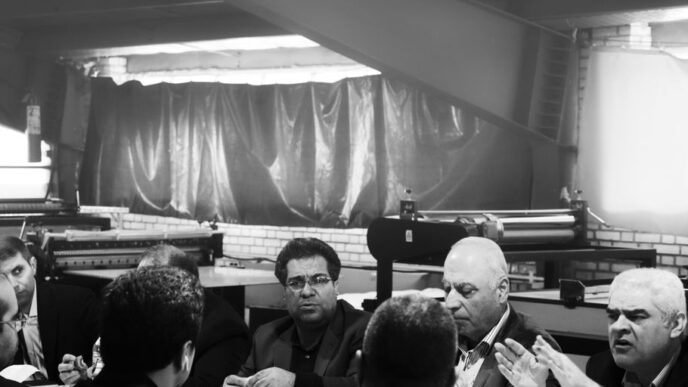This episode of Startup Savants features Kyle York, the founder of York IE. He talks with podcast hosts Annaka and Ethan about what his company does and how it can help startups scale with strategic growth and investment advice and assistance.
So you were Chief Revenue Officer at Dyn, then spent time at Oracle after the acquisition, and now you’ve founded this extensive resource for startup founders. Can you tell us about that trajectory?
“So I grew up in a family business and always knew I wanted to be entrepreneurial, and I think I happened to just get lucky in certifying tech and software early in my career. And majoring, I went to Bentley University in Waltham, Massachusetts, just outside Boston, and I majored in marketing. So I sort of naturally ended up in the marketing sales track early in my career in software.
And so did that for a few years. A college classmate or a high school classmate, I should say. Actually, I was a co-founder of Dyn and recruited me back to my hometown. I was living in California for my first company and decided to take a leap on myself and came back and became Chief Revenue Officer of Dyn. Everyone says Dyn, Dyn. It’s always interchangeable, almost. And so I rose with that company. We were 15 engineers. We scaled it up to a 500-person company, a hundred million ARR, and sold Oracle in late 2016 or early 2017.
But in parallel to that, given Dyn was an internet infrastructure company, a lot of tech founders, engineers would come to us with their new great idea in building the next great app or the next great cyber security company. And I was the chief revenue officer. So I would work with all the fastest growth companies, and they would ask me a lot for help on their business model and their scaling plans.
And so, really early on, I started to take on a few advisory gigs of independent board roles. I started to open up My Wallet and invest right out of my W-2 income right back into other startups. And by the time we left Oracle, myself and my now co-founders had started to work together, and we had made over 60 investments in B2B software businesses, sat on multiple independent boards, was an advisory board member to a dozen other companies, and started to dream up the idea and the formation of what York IE could be. Could this potentially be something that we could all do and scale as opposed to the advisory investing being moonlighting and having a full-time operator gig where you’re always feeling you’re cheating on the other, could we do it in one package? And so that was really the manifestation of York IE. And we’ve been off and running since.”
So what does York IE do?
“What we tried to dream up was more of this vertically integrated model where we could build an operating company that has resources, infrastructure capabilities and data. We have a tech platform and advisory services for startups that can work with any startups. That’s a 70-person company scaling super fast. That is a recurring revenue, B2B-focused business model that is our core operating company. So that’s what York IE does. The data platforms, the market research and data automation platform. Think of it like an operator version of a PitchBook or Crunchbase, has a lot of templates, live chat advisor, get a lot of support in a more self-service sort of way.
The advisory services are tech-enabled services for MarCom, product development, business growth, go-to-market, and revenue operations, all leveraging that tech stack, but putting an advisory services manager and delivering those things more as custom scope of work type services for the startup ecosystem. We also have a capital pool, it’s not a traditional venture fund, but it’s a seed-stage investment pool that we call an Evergreen Syndicate. We make 15 to 20 B2B SaaS investments in early-stage startups every single year. And high-net-worth individuals and family offices are what we call investment partners who give us a five-year capital commitment and get an annual allocation into those 15 to 20 deals per year. So they in essence, get an index of early-stage SaaS through us, and that’s a capital pool of a shade under $20 million per year that’s getting invested into the startup ecosystem.
The way we go to market … is we put a lot of content out into the world on how to build and scale [a] startup, from newsletters to interviews like this to our blog, to ebooks, to different curriculum and templates and playbooks put that out into the world, and we drive a lot of inbound traffic to york.ie, our website, and all of our social channels and profiles, and the startup ecosystem comes inbound and says, ‘Oh, I wonder if these guys can help us.’ Some of those companies are 50-million ARR businesses who just need some service support. Some of them are pre-revenue genesis stage ideas who are looking for more of an incubation and everything in between. So we have an essence away from low-touch to governance, high-touch to be actively engaged with the startup ecosystem.”
What makes you all different from other investment firms?
“So almost thinking of it a little bit more like corporate venture in a way, right? I think it’s just a little bit hard to see us as corporate venture because we’re still a startup scaling ourselves. We’re not the size of McKinsey or Gartner yet. We’ll get there.
So I think most of the time, when venture capital firms or private equity firms have services, they’re only for their investments. And honestly, the only ones who have services that are in-house and on payroll are the ones that literally are massive. Like Warburg Pincus, or Bain, or Insight or OpenView. They have to be billion-dollar funds to be able to support the infrastructure to help support their startups. Our capabilities, our tech platform, our SaaS platform Fuel, our advisory services capacity, those services and capabilities are available to anyone. And then the cream of the crop ends up in our investment pipeline, and they have to be early-stage B2B, SaaS, recurring tech laggard industries. We have an entire thesis designed to invest in those types of companies.
So I think the biggest difference is we’re not just the VC fund that has services or capacity or data platforms – we’re a company that invests. Second thing, which is nuance, but if you understand the traditional fund constructs and alternative investments, whether it’s a real estate fund, a hedge fund, a venture fund, a private equity fund, they all operated at the same 30-, 40-year-old construct of the two and 20. They take a management fee, %2, %3, 4% a year for the life of the fund, and then they make 20% or 25% or 30% carried interest on the gains of the fund. That’s the economic model.
And then, they pass through all the deal fees, the legal fees, the tax fees to their LPs. So it’s a general partner, a limited partner model. Ours is not that construct, it’s an Evergreen Syndicate. It’s deal-by-deal economics. There are no management fees. We didn’t get aligns the incentives with the entrepreneur as the client because we’re not charging investors this annual fee and getting fat and happy off their management fees. We’re having to go earn it and build great companies and get them to wins in the win column. So it’s also the construct and the economic model for the investors. It’s very different than a traditional fund.
What do you consider to be your personal superpower in the entrepreneurship game?
“I can dot-connect things and work in a ridiculous flow that most people are just incapable of. I think my business world in my sort of York IE, York IE is an investment enterprise, is incredibly complicated. I mean, York IE is … 12 legal entities that exist beneath the covers that we sort of tie together into this clear and concise discussion we’re even having today.
So I think it’s that matchmaking BD dot-connecting deal guy at the end of the day that differentiates me and that high-throughput, high-capacity, like an engineering brain, single-threaded, a finance brain, single-threaded, an accounting brain, single-threaded. I grew up in sales that’s working lots of deals at any given time, pushing them along through process.
And I’ve just sort of escalated that to a more strategic bigger-picture level. I also do consider myself a pretty good evangelist, too. [York IE is] the first thing in my career where I’m so passionate about it, too. It’s like I’m not just evangelizing Dyn did the domain name system. Before that, I worked in edtech software. These things are cool, I guess, but the passion I got was around the brand, the people, the opportunity.
Now I think it’s authentic and genuine. It’s entrepreneurial. It’s helping entrepreneurs build and scale their companies their way. It’s bringing a little more pragmatism to the Silicon Valley growth at all costs, sort of vanity metrics game that the current macro market is crucifying. And I think that’s been a big differentiator to that Yankee pragmatism here, being from the Northeast.”
When you were in sales positions, were these business deals, business sales that you were making? Did you have the ability to get creative in those deals”
“I think I was very, very fortunate in my early 20s in my first company because sales, it was an edtech platform for software to run your school. So a good client of ours in Michigan was Cranbrook Schools back then.
And so we basically had the operating system, the CMS to build the frontend websites, put it then the backend to run the school, grading, admissions, fundraising, and it was this end-to-end suite for private schools. Well, in some instances, I’d be pitching as a young twentysomething. Bill Gates is the chairman of the board of Lakeside School in Seattle and gave him $40 million. And the next instance, I’d be pitching a K-5 Montessori school in Texas that a teacher was the tech decision maker.
So I learned really quickly how to sell enterprise sales or sort of more transactional sales in different capacities because it was a platform and it had a suite of tons of different capabilities and products and services. Every deal was sort of bespoke and consultative and relationship-based. And I think it was just an amazing fertile ground for me early on to be very creative with hearing the customer, what are their pain points? Where do they need help? How can our company come up with repeatable use cases in a consistent value prop for them and their implementation of our capacity, right? So that’s, I think, the fertile ground, the training point that made it more creative. When I went to Dyn, it was a little bit more like shoe sales. I mean, we had a DNS product, there were competitors, our product did this, this, and this.
There was a roadmap, but it was much more of an off-the-shelf, multi-tenant recurring revenue SaaS business. [But] because we’re internet infrastructure, the use cases across a company that were maybe a mobile game versus a CMS platform, versus an email marketing company, versus the next social media juggernaut. The use cases of the technology were all very different. And the relationships with those companies weren’t always a customer vendor. Many times our biggest client of Dyn was AWS, Amazon Web Services. Amazon Web Services was also our biggest competitor in the world.
So the relationships were very complex. So you had to work out really unique, sure, customer engagements, but also partnership, white-label partnership, embedded partnerships, technical integrations into the overall scope and package. So I think every business sort of scales itself, the best SaaS businesses especially scale themselves on the repeatable, the widgetization, the sell a lot of shoes on repeat over, and over, and over, and over again. I mean, the beauty of SaaS is like, you sell one shoe, they renew the same shoe next year, next year, next year versus straight widgets. But also being able to do enterprise or strategic sales or partnerships that are very creative and unique, obviously without getting too far out of your lanes that you break your business model and do that one-off for a client that doesn’t fit the technical capacity. But I think those types of things were good examples of how to do creative business deals along the way.”
How is York IE funded?
“Yours truly. So, when I decided to build York IE, knowing the complexity of it and knowing that it was a lot of things in one, right? I mean, we could have set out and said, ‘Let’s just go build a boutique PR firm, or let’s go build a dev studio, or let’s just build a seed fund, or let’s build an analyst firm.’ And we decided to do a bunch of those things in one unsiloed integrated package. Because of that, I think it also limits itself towards this type of thing that is going to need to be malleable and flexible and iterative as we grow.
So we made a decision very early on that I was going to self-fund the business, and we were going to bootstrap ourselves to a sustainable business model for the foreseeable, I call it, decade-ahead future. So as much as we have investment partners who invest with us, and again, any year listeners who are high-net-worth or family offices who have interest, happy to talk about our model and how it differentiates from traditional seed. No investors. Outside investors are investors in core York IE. That’s just myself as an owner and majority owner and also the team members that I give equity.”
Did your previous experience with investors influence how you’ve formed these relationships with your own startups and founders?
“I would say my experience, not only with investors but also with analyst firms, with agencies, with consultants, with advisors, I just always felt like it was a few different things happening. You have just misaligned incentives everywhere. Even Time Horizons. If you’re talking to a consulting shop about helping you with marketing or a legal law firm or something, they’re all hourly-based, and they’re all looking to get as much money out of you in the short-term as possible.
If you look at an investor, well, they’re long-term-based, trying to figure out how do they turn your company worth $50 million into a company worth $250 million. So you don’t align any of these incentives. And then all these different service providers or investors or partners or vendors all end up in their different silos in their different functional counterparts inside a company. So I think it just becomes, when you start to scale, and you look at cost, and you look at efficiency of capital, it’s spent all over the place.
I mean, at scale at Dyn, we were spending 30, 40 grand a month on analyst firms. We were spending 25 grand a month on PR and content shops. We were spending 30, 40 grand a month on independent consultants helping us enter new verticals or market segments. You start to add all this up, and you’re like, ‘This is straight chaos.’ So again, I think we’re trying to help those traps be avoided based on the learnings. I mean, it didn’t crater our company, but it has cratered lots of companies when their burn rates get so high because those incentives are misaligned.”
As far as the startups and founders that you choose to work with, can you identify a trait or a couple traits that binds them all together?
“I think when it comes to the founders, I do think it’s a lot of philosophical alignment on how to build a company, right? A lot of times these days, if you read TechCrunch or Business Insider or Reed, the Axios newsletter, everything’s about this company raised this much money at this valuation. Well, guess what? From day one, those companies tend to have a pitch deck even in their seed round, where the milestones are [the] fundraise events that are going to come into the future.
I think our thesis is all around founders who want to build a good and healthy and scalable business. And yes, we’re not against raising money or raising a lot of money if the market opportunity opens up for you, but not that being the sort of default de facto strategy to build a high-burn sort of underwhelming, unimpressive business, right? As a kid, if our family business didn’t do well, what happens? We don’t eat, right? And I think the culture has become, everyone’s going for an outlier, like a Figma, right? Or a GitHub.
And it’s like, well, those are outliers. That’s not the playbook you should follow. You should follow the playbook of good healthy exits. And I know tons of founders who have sold their company for 20 million bucks or 50 million bucks or 100 million bucks or 500 million bucks and are set for life in multiple generations.
And I just think the whole game has shifted. So typically, it’s founders who are just much more business model-centric, are pragmatic, are really thoughtful about the plans, they’re believable, they don’t need to be blow-the-socks-off, they need to be solid. And again, if the market opportunity opens up, we’ll support it. And I’m sure they’d go for it, but it’s a little different game.
Your website says that York IE invests in markets and people with a ‘market in’ approach. Can you tell us what ‘market in’ means?
“The general idea is that most founders, especially in software tech or infrastructure, tend to be engineers. I don’t know what I would do to begin if I had some great product idea if I didn’t have an engineering co-founder. So a lot of founders, CEOs, Bill Gates, Mark Zuckerberg, a lot of these guys end up as their devs who hack something, and then that becomes their big idea. That’s the product approach to company building. It’s like I’m going to build something because I see an opportunity, and I’m going to build and iterate on it and take it to customers into the market.
We like the market approach and approach to company building, which is more, ‘I’m going analyze an industry, I’m going to have deep market expertise, domain expertise, I’m going to look for the gaps in that industry, and I’m going to decide not only what product to build, but also how to message, position, price, build to go to market, all the other business building things attached to how to disrupt that market and that industry landscape.’ That is a very, very different slant on the way companies typically get built.
So everything about York IE, from our data platform, which is a market research competitive intelligence, look up a company, create a watch list, track markets and industries, understand their news, their blogs, their hiring plans, their funding strategies, roll that all into this cohesive view all the way to all the services we offer, they’re all anchored in that market research, understanding your market, do you know competitors messaging, positioning, product suite, pricing, packaging, hiring plans. All these things dictate more of a ‘market in’ view on how to build a company versus that ‘product out’ view. I think that’s a great way for people to get their heads around the ‘market in’ approach to company building needs.”
So these founders and companies that are coming to you with this ‘product out’ view, where are they getting this?
“I think it’s just the way it’s always been done. And I think at a lot of companies, it’s like somebody works somewhere is working on something … A lot of times spin out and say, ‘You know what? I’m going to go do my own startup.’ And it’s based on what they’ve been functionally doing. Even a lot of times when a lot of our founders are either the founding engineer needs a lot of business and go to market sport, I think we’re a wonderful fit for that if you’re looking for help. Also, it tends to be people from markets or industries but aren’t SaaS or product people. So we invested a lot of vertical SaaS.
That’s what we’re seeing a lot. I mean, we have companies in vertical SaaS that are edtech, we have OceanTech, we have healthcare tech, we have all these different sorts of vertical innovations that are based on market or industry expertise coming in to say, ‘What can I build for a product?’ So I think it’s honestly just more of the way it’s always been done. I do think modern tech stacks and modern tooling and offshore development resources and a lot of things are shifting this paradigm where business people, sales, marketing people, finance can start companies now and lean on modern tech stacks and AWS and cloud platforms that historically were mind-blowing for people. What do you mean we’re going to have developers in Ukraine, or Lithuania, or India, or South America? That, to me, 15 years ago, was as scary as it gets. Today, there’s a lot of ways you can get the market better than that. So I think it’s why the timing on the market end is also really relevant today, too.”
What is vertical SaaS?
“SaaS, to me, is a business model, which is recurring revenue software. SaaS can go up and down the stack. They sometimes call it IaaS, infrastructure can go to platform. PaaS is a service platform. It’s like more data layer API-type companies, and you get to SaaS. Wome SaaS like HubSpot or Salesforce is horizontal SaaS, meaning they built a ubiquitous platform that can be used by any vertical industry, right? That does specialize in something specific. Vertical SaaS is more when the technology application and capability is purpose-built for that exact industry. So vertical SaaS would be like, ‘Is it for manufacturing? Is it for education? Is it for financial institutions or banks?’ So FinTech is a vertical SaaS play.
So that’s the way you should think about a vertical. And honestly, those many times, it’s the most boring industries that have been so tech laggard, the adopting automation, and data, and technology that are the best ones to invest. What ends up happening in vertical SaaS often though, is their total addressable market. How big can this company get? Sometimes can be as big as the market they’re disrupting. So if you’re doing organic farming tech or something, well, how many organic farms are there? At what ARR per customer can you get? There’s your TAM.
So I think that’s sometimes the knock on it, is that how can it get as big as Salesforce or Workday.
But I think for us, it’s like, ‘Well, that’s fine. You don’t have to be a $10 billion company or go public.’ Build a good, healthy company that disrupts an industry and becomes the household name. That’s the beauty of vertical SaaS. You can literally own a space pretty quickly.”
How do you define success for yourself?
“The way I build my companies is the same way I build my career. Set a long-term vision, know what your ‘North Star’ is and where you want to go long-term. Be super loyal along the way to your mentors and your mentees and the people around you and the team that you need to build to get there. And then work your way back and make sure that every decision, every career move you make fits into that long-term narrative and that long-term vision for yourself and that you’re making yourself get there along the way.
And for everyone that North Star, that vision’s going to be entirely different and how that impacts their family, and their lifestyle, and all those types of things. But I think the same holds true for companies, again, back to York IE, I feel like I’ve been able to merge that, right? That’s the beauty of it. It’s like I now feel like for the first time ever, I can go wake up every single day to build this really differentiated, disruptive model that also plays into my long-term vision, which is [to] make a big impact on my space, my community, my friends, my peers, my family, right? All those types of things. And it’s a good foundation for that.”
Let’s talk about York IE’s advisory services. So you focus on four different areas, product, development and strategy, marketing and communications, go-to-market and RevOp, and business growth strategy. Do you see any one of these as being even 1 or 2% more important than the other three?
“No. I think the reality is, though, we’re iterating on what we offer. I think we are listening to the startup ecosystem. We are listening to the founders who are in our communities. We are listening to the founders that are actively engaged with us in an advisory contract or in an investment. And we’re continuing to iterate and evolve on what we are going to build first-class native into York IE versus partner with others to help us support. I think these capabilities are what we are uniquely capable of weaving together because SaaS is so interconnected between sort of business growth, capital strategy, business model, all the way back to R&D, how you build cost-effectively, how you iterate and evolve your roadmaps, all the way through to what’s the go-to-market to support that? What’s the pricing and packaging to fit that? What’s the go-to-market to build that? And then how do you evangelize that from a MarCom perspective?
So I think they’re really actually much more integrated than you’d think. I mean, even in the MarCom module, where people need website development. Well, I guess what – that’s our product development team. In RevOps, it’s like we want to implement Salesforce or HubSpot, integrate these different sales enablement tools, or we need developers to do that. Well, guess what? That’s the product. So as much as we’ve tried to productize them and widgetize them and modularize them, there’s a lot of crossover and a lot of our engagements where we’re leveraging others. The first one we launched was MarCom when we launched York IE. So we launched York IE in late 2019, we launched initially just with the investments business because we just took our angel deal flow and put it into the investment business.
In the summer of 2020 is when we launched services, and we launched predominantly with MarCom. Biggest reason for that is I think it’s the thing most engineering founders just save for later, right? And in this day and age, if your content and mind share is key and king in the market, if people don’t know who you are and you don’t have a credible brand, then you’re not going to be able to win, right? So we think companies need to be marketing themselves. I hate when I see a stealth mode startup, it’s like the dumbest thing ever, right? It’s like, ‘No, you need to be evangelizing from day zero.’ So that’s why we originally launched with MarCom.
Secondarily, go-to-market strategy, what sales motion were, what sales model. But a lot of times, that comes when you’ve got a few million ARR, and you now are clueless on how to scale. I think that’s an absolute sweet spot for us from a services perspective. It’s the companies that actually have product market fit and are now crap. How do we scale from one to two, to five, to 10, to 20? I mean, I actually joined Dyn and had a couple million ARR, and I took it to a hundred. If you actually look at what I love to do more, it’s not 100% aligned with the stage we invest [in]. We just invest really early and have to try to get these companies there.
So I think that’s going to be a big part of it. But the beauty is the interchangeable nature of them. We’re super malleable and flexible on the contracts. Oh, ‘We want to scale back R&D, we want to put a little bit more towards MarCom.’ Or, ‘Hey, we really need capital strategy, business growth strategy help. Can we lean in there?’ We can be very malleable. Which again, if you think about the industry, those would be multiple different providers across multiple different teams in silos all racing to how do they get as much cash out of you as possible per month.
And our model is just very different. We won’t just work for a retainer. We will do some project work if it makes sense, deep dive analysis stuff. And we’ll also work for stock or options or warrants or other vehicles if people want to keep costs down. It’s typically a balance, but we’re all about trying to make it work based on where the startup is in their life cycle.
What’s on the plate for York IE here in the coming years?
“I feel like this is the first year I felt the foundation’s really strong. When you’re building a startup and think of us in the mid-five, six million ARR landscape. When you get to this stage, you need to make sure your systems, your processes, your people management, your corporate hierarchy and governance, and all these things are in place. And I feel like that’s foundationally strong, and that’s been the focus to get here. I think we’re now in expansion scale mode, which means how do you make this repeatable and scalable in a cost-effective way? If you look at even our website, we’re very top-heavy. We have a lot of very expensive leadership, and we need to be able to build firm systems and hire young talent and train them and onboard them and be able to deliver the ROI and the value of this model.
So a big focus for us is just going to be scaling. I think scaling clearly is scaling of the operating company. I don’t know. When are we super legit? And when someone can say, “We’re going to use you over BCG, or ICR, or Gartner, or whatever you need to be of some scale and substance and credibility on the operating business. Is that people, is that revenue, is that, I don’t know, geography? How do you measure scale? I’m still trying to chase that down. Same thing on the investments business. How big is that capital pool need to be where the big tier 1 VCs go, ‘Wow, those guys are disruptive, they’re messing with us, they’re beating us to deals, and they’re coming in and leading all their deals. And holy cow, that model’s working.’
Right now, we’re in a shade under 20 million a year. I think it’s going to get to 50, 60 million a year. And then at that point in time, it’s like, holy cow. Because 50 to 60 million a year in a fund construct is a half-a-billion-dollar plus fund, right? So I think that’s the type of stuff that we’re really focused on … is scale on this strong foundation. That’s really, really hard, but I think we’ve got the team and tech to make it happen.”
What is your number one piece of advice for early-stage entrepreneurs?
“Number one piece of advice is [that] it’s not as fun as you probably thought it was going to be. I think, again, back to the Vanity, there’s a lot of shine, and now there’s movies on Netflix about these great startup founders. And I think it’s a lot harder than people think it is. Regardless, if you’re running a small business or a mom-and-pop store on Main Street somewhere, right? It is really, really, really difficult to build a business, and it’s not always super fun. So I think you got to keep that perspective, and you got to play the long game, as we discussed earlier, and realize it’s a rollercoaster, and there’s no straight line to success on any level.
The only other thing I’d marry that with is success is relative. It’s back to the early point of setting your long-game vision. Success to me is different than success to you and your firm or success to the restaurant owner or not everyone wants to franchise their restaurant, right? And I think that’s fine. You have to define what you’re trying to build and what success is to you and not care what anyone else thinks about that, right? So I think that’s the other thing. Success is relative. Remember that. Try to funnel on the way, just win. But winning is also incredibly relative.”











